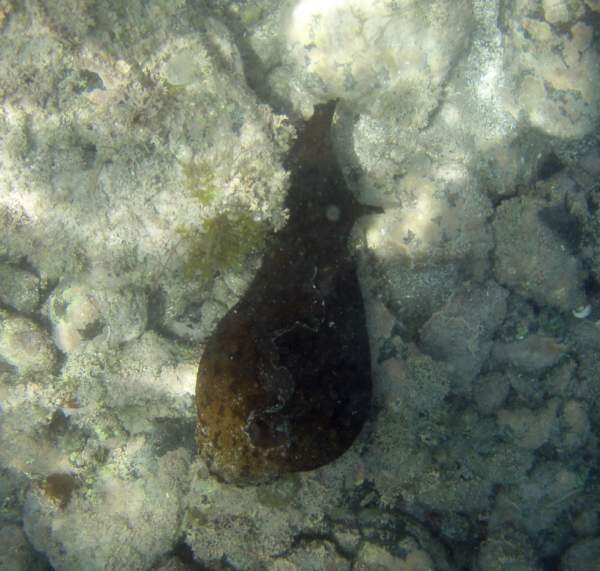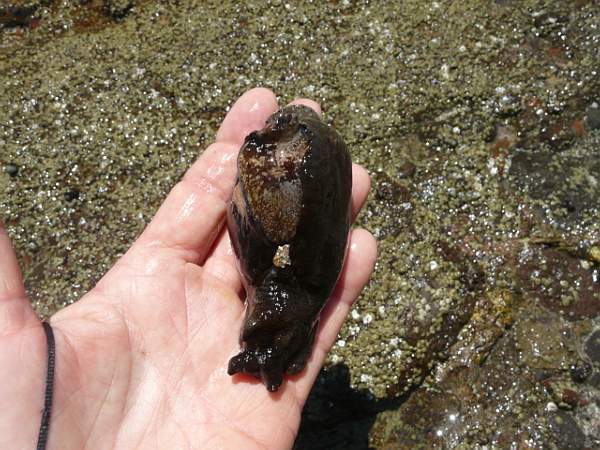Published in the Ocean Watch column, Honolulu Star-Advertiser © Susan Scott
June 8, 2009
Last week, while snorkeling in a cove in the Sea of Cortez, I noticed a dark brown blob of seaweed, its frilly blades swaying in the swell. It was darker than the surrounding plants — and then this seaweed got up and walked.
I called to Craig and we floated above it enthralled. Two rolled tentacles probed at the front, two ears sprouted from the head and a tall, ruffled rear end trailed behind. The creature was about 18 inches long and 8 inches tall and wide.

“Look,” Craig said. “It’s breathing through its butt.” (Always using technical terms, that Craig.)
Sure enough, water flowed in spurts from a hole on the top of its backside.
“What is it?” he said.
“I want to call it a sea hare,” I said, “but I’m not sure. The ones in Hawaii are tiny compared to this.”
Back at the boat I looked it up. My creature was a sea hare.
Sea hares are snails with just a remnant of a shell on their backs. Some have no shell at all, like their cousins the sea slugs, also called nudibranchs. The thin, fragile shell of a sea hare isn’t usually visible, but when I gently touched my animal’s back, I could feel it. The shell covers the animal’s heart and gills.
Two wavy pieces of skin surround the sea hare’s body. By flapping these capes, the animal can swim a little. When the sea hare is sleeping or alarmed, it draws its capes up over its back, leaving only a small opening over its anus.
Craig was right about these creatures’ breathing. Water flows in from the front of this skin covering, called the mantle, over the gills and out the back through the anus, which also discharges the creature’s wastes.
The two pairs of tentacles on the sea hare’s head are smelling organs, and their job is to find edible seaweed. When these organs are rolled up, they’re tubelike, but the animal can open them nearly flat.
The top tentacles don’t look much like rabbit ears to me, but Aristotle called the Mediterranean species sea hares and the name stuck.
Sea hares graze in shallow water, and sometimes the surf or tide beaches them. Because of this, Australians call their sea hares beach blobbies.

The world’s warm oceans host about 50 sea hare species, ranging from 1 inch to about 2 feet long. The largest in the world is the California black sea hare. It ranges to Baja and might be the species I found.
Sea hares are the color of the seaweed they eat. Some kinds release an ink cloud when disturbed, also the color of their seaweed food. Mine didn’t do this when I picked it up, another sign (besides its large size) of the black sea hare.
A poisonous substance in sea hares prevents seabirds and fish from eating them. In Western Australia, dogs have died from eating a species there. Sea hares, though, are safe to touch.
Being hermaphrodites, sea hares often mate in chains, female end to male end.
Researchers are interested in these marine animals’ large, colored nerves. The colors make them easy to separate and study.
I watched my huge adorable sea bunny until I was waterlogged, thirsty, hungry and tired. Still, I left the water reluctantly. A few days later, this time knowing what to look for, I went snorkeling in brown seaweed specifically to find another giant sea hare.
It was a day of my dreams. I lost count at 23.